Integrity is a cornerstone of Riveted Travel. We believe that we should not only “do no harm” but go beyond to do something good when we can. The Galapagos Islands in Ecuador are a sensitive and irreplaceable environmental treasure. Beija’s second grade class was doing an intensive study on the Galapagos Islands, focused on ‘Save the Galapagos,’ so we decided to use that as a springboard for our trip and focus on the environment.
Travel to Save the Galapagos:
- learn about the issues
- vet your operator
- hire local guides
- respect boundaries
- pick up trash
- donate to local NGOs
1. Learn about the issues
Beija’s school studies were a great place to start. The class did geological and animal research and presented their findings to the parents. We also did some research at home on some of the biggest issues facing the islands- invasive species and global warming are hitting the islands particularly hard. We set off for our trip with Plundering Paradise: The Hand of Man on the Galapagos Islands and The Voyage of the Beagle on my Kindle. Yes, I did finish them both.
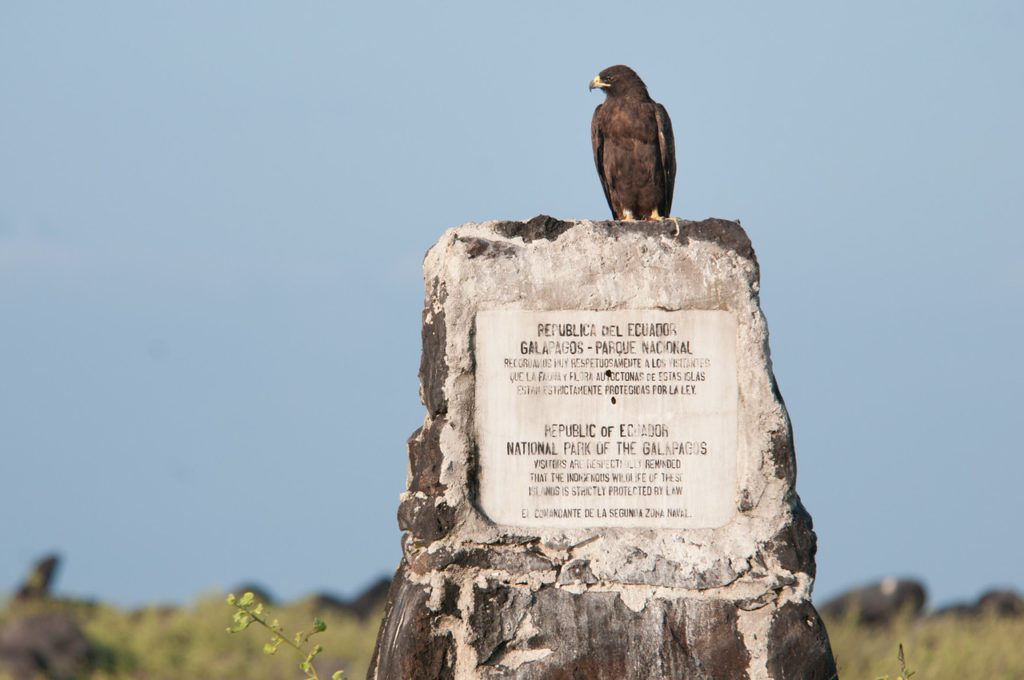
Humans have disturbed the natural habitat of the Galapagos Hawk to the point that there are very few left.
2. Vet your operator
Because we wanted to try to reduce our impact on the islands, I did a lot of research into various tour companies. I decided to go with Ecoventura after a bit of reading and a few phone calls because of their unimpeachable sustainability credentials. Not only were they great environmental stewards, they made a mean afternoon snack.
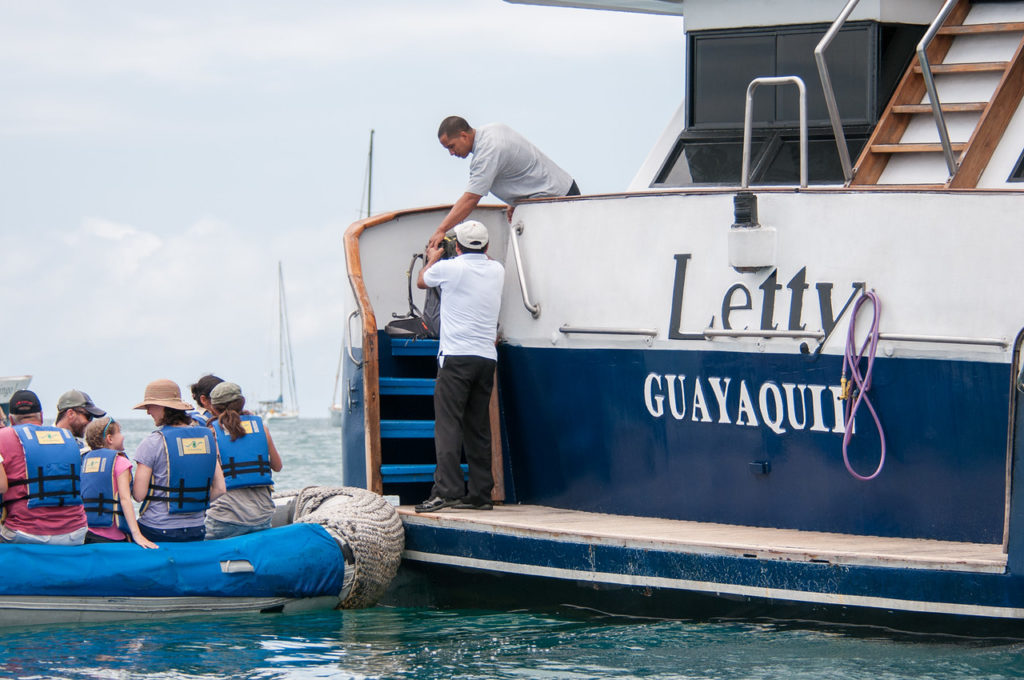
Ecoventura onboarding
3. Hire local guides
Ecoventura handled this for us, but we have often found local guides to show us around a new city and tell us about the history and culture. It puts money in the local economy and creates opportunities for local people in addition to giving us the best insider information. A guidebook only goes so far and tripping over a bench with a map in front of one’s face has happened. I won’t say who.
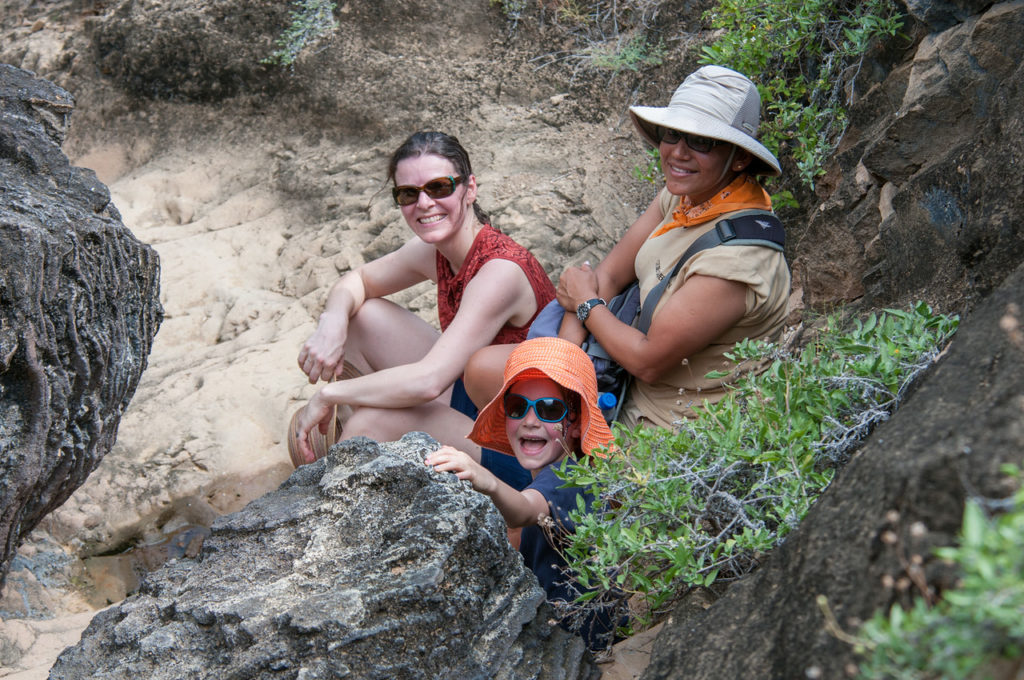
Maria knew all the best shady spots.
4. Respect boundaries
Unless we are barefoot travelers creeping through the jungle, we can have a great impact on natural areas just by walking through them. We usually travel in large-footed groups. To travel with integrity, we have to teach our kids why some boundaries are important (not the glass ceiling type). For example, it may keep animals from being reliant on human food or small plants from being trampled and eventually disappearing from an area.
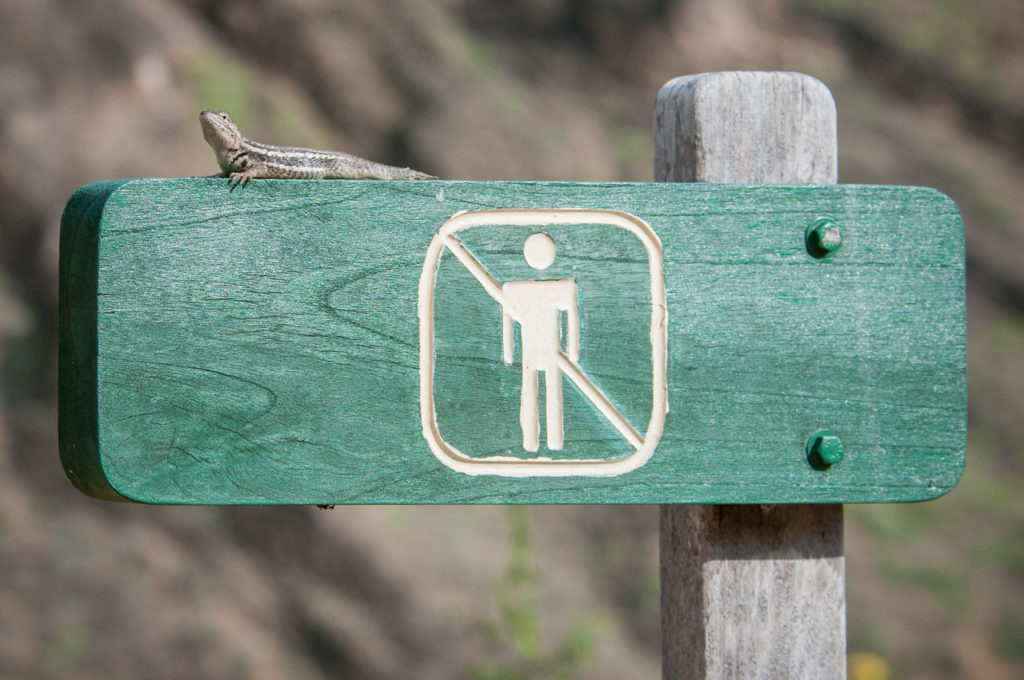
No people. Lizards ok.
5. Pick up trash
Trash is a small thing and we may barely notice as we step right over it on the sidewalk at home. Bending over and picking up something left where it shouldn’t be is easy. If everyone did it, could have a large impact. It would be even better to avoid disposable products or those without biodegradable packaging, but that is another post.
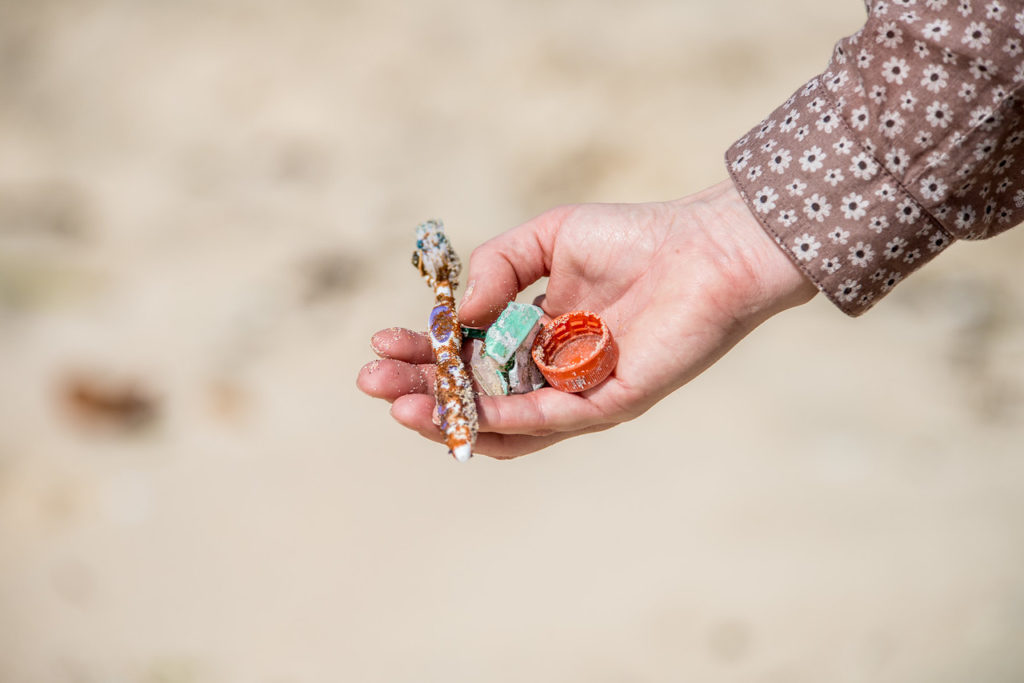
A toothbrush and other plastic bits that rolled in on a wave to an isolated beach where sea turtles were laying eggs.
6. Donate to local NGOs
Wherever you go there are likely to be several Nongovernmental Organizations, or NGOs (what we call nonprofits here in the US), who are doing good work in the area. We like to find a few that we feel good about on every trip and make financial donations. Ecoventura made it easy for us and made a whole Galapagos support webpage.
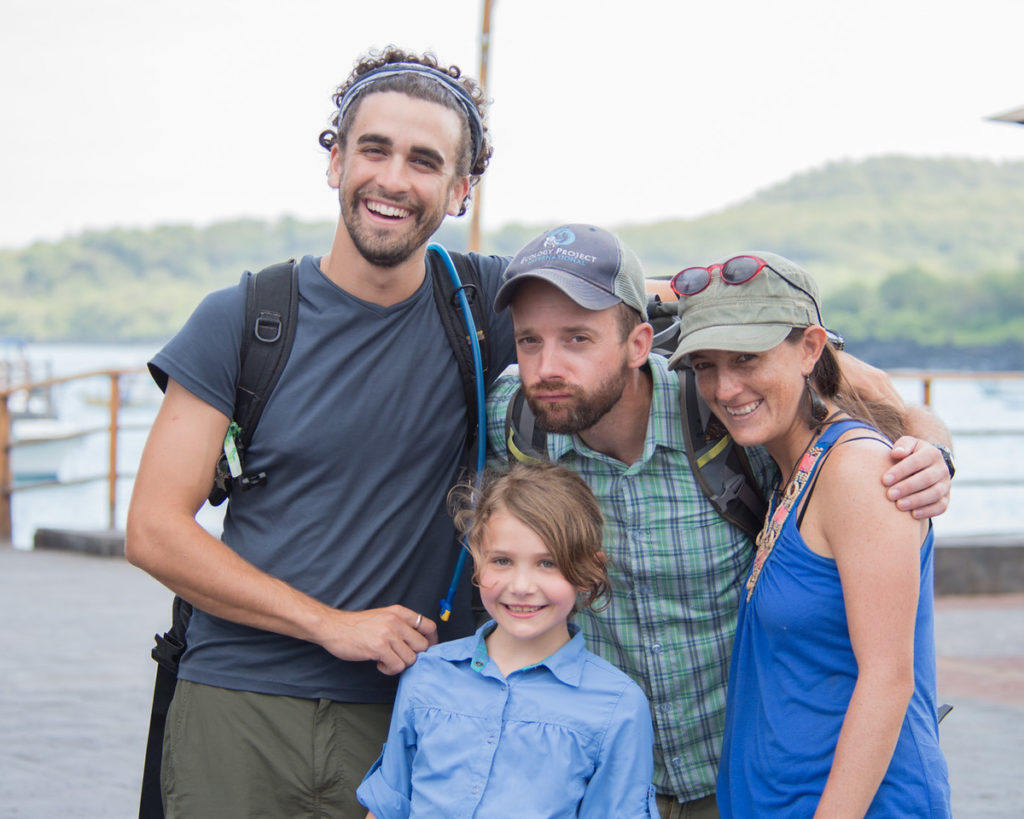
These three young people were scientists volunteering for a NGO that provided environmental education to children living on San Cristobal Island in the Galapagos.
It takes a little extra time to identify the best ways to ensure a sustainable trip, but it is worth it to know that your kids’ kids may be able to have the same experience you are. What things do you do to travel with integrity?
Leave a Reply